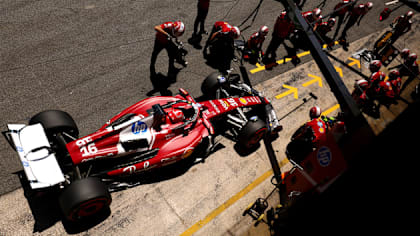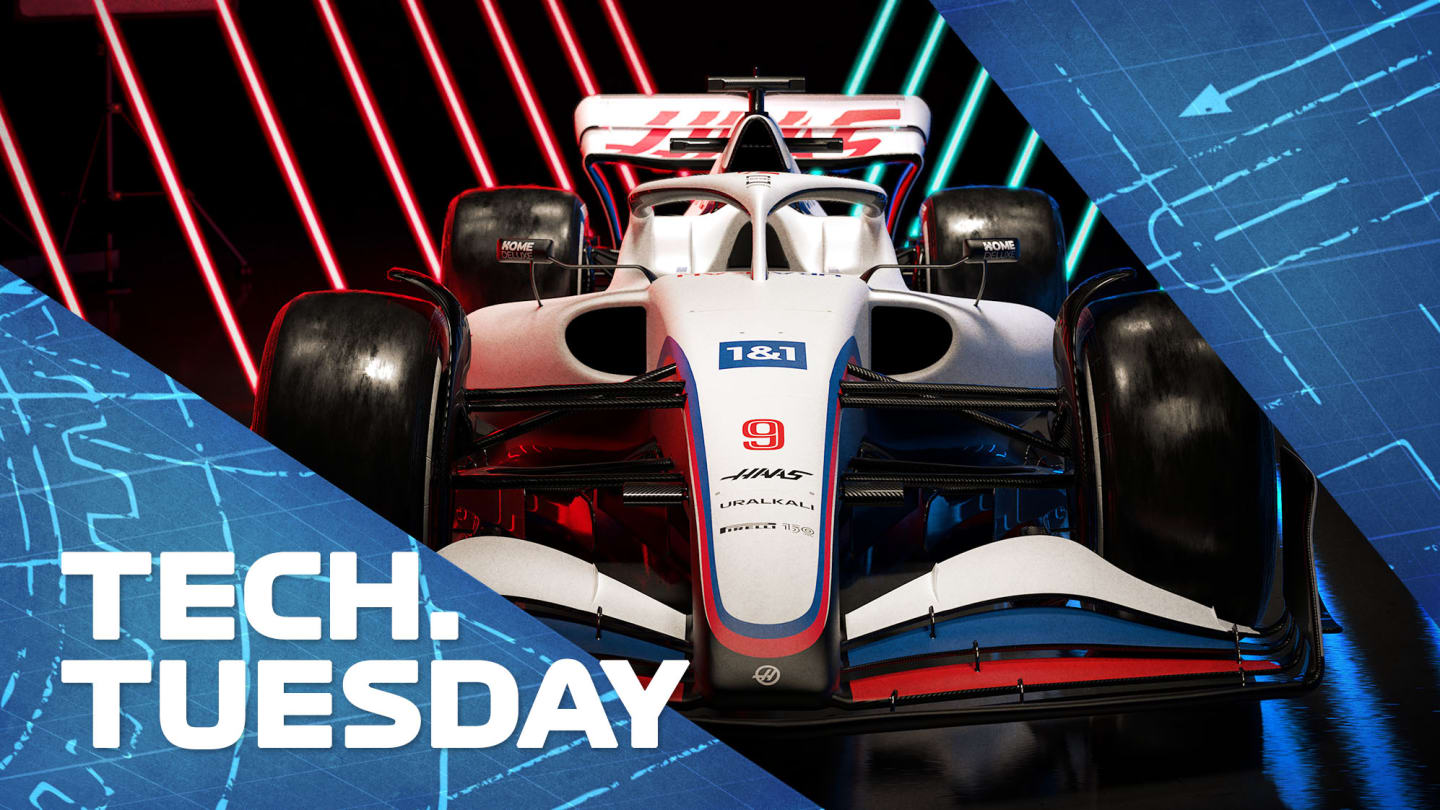
Technical
TECH TUESDAY: How 2022’s suspension overhaul could shuffle the competitive order

Share

The simplification of the suspension systems under the new regulations will have initiated a thorough re-assessment from the teams of how best to design and package this rarely mentioned but critical element of car behaviour.
The limitations upon suspension systems which had become incredibly complex in order to maximise aerodynamic performance have been swingeing. Hydraulic actuation of any kind is now banned, meaning that the big heave spring used to maintain vertical load on the car must now be mechanical.
IN NUMBERS: The staggering stats behind the development of the all-new 2022 car
This won’t have much impact upon performance but makes packaging more difficult, as the mechanical version of the heave spring is much bulkier. Not everyone was using a hydraulic heave spring but Mercedes switched two years ahead of time to mechanical (preparing for what was going to be the ’21 introduction of the new regs).
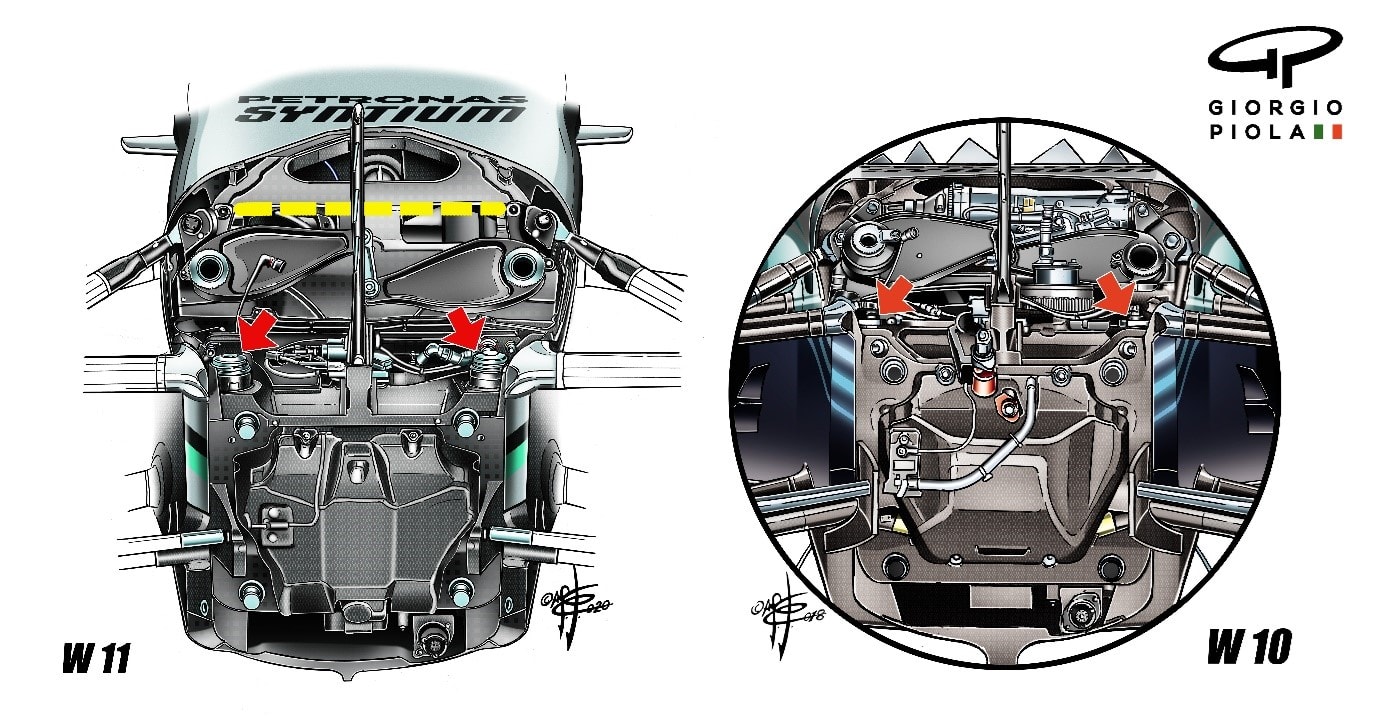
Giorgio Piola’s drawings illustrate the Mercedes switch from hydraulic to mechanical operation for the heave spring back in 2020. The yellow lines indicate where the mechanical heave spring would go on the 2020 Mercedes W11, with the 2019 hydraulic version on the right
Also outlawed are inerters (which were first used on the 1997 McLaren and which have been a standard F1 fitment for a couple of decades). The inerter was a device fitted within the suspension which used a tiny flywheel reacting to suspension movements to soak up some of the energy, softening out the peaks of the loads upon the tyre. It gave the tyre an easier time and also made it practical to use softer rate springs for better mechanical grip at slow speeds.
ANALYSIS: What Haas’ VF-22 can teach us about how teams have approached the 2022 regulations
Also now banned are:
“Any form of ride height control or alteration via self-levelling systems or feedback loops.” This would seem to outlaw the Mercedes rear suspension’s ability last year to set to a lower ride height once the downforce at higher speeds had pressed the car down past a set threshold. This is what allowed the car to maintain its dramatic diffuser stall for enhanced straightline speed.
“Any variation of ride height caused by the suspension geometry’s kinematics and the tyre shape must not exceed 3mm over the range of steering lock.” This has limited how far the front suspension can be lowered past a threshold of steering lock, giving the car more downforce on low-speed corners, an innovation introduced by Ferrari in 2018 but since widely copied.
“Any storing of energy via any means for delayed deployment and/or any suspension system that would result in a non-incidental asymmetry (e.g. hysteresis, time dependency, etc.) in the response to changes in load applied to the wheels.” This outlaws any system which prevents the suspension loads being transferred in a linear way and would include the inerter but is not limited to that.
It will be interesting in particular to see how Mercedes have reacted to this set of limitations, as their front suspension has long featured the unique ‘interconnected double-almond’ anti-roll bar arrangement.
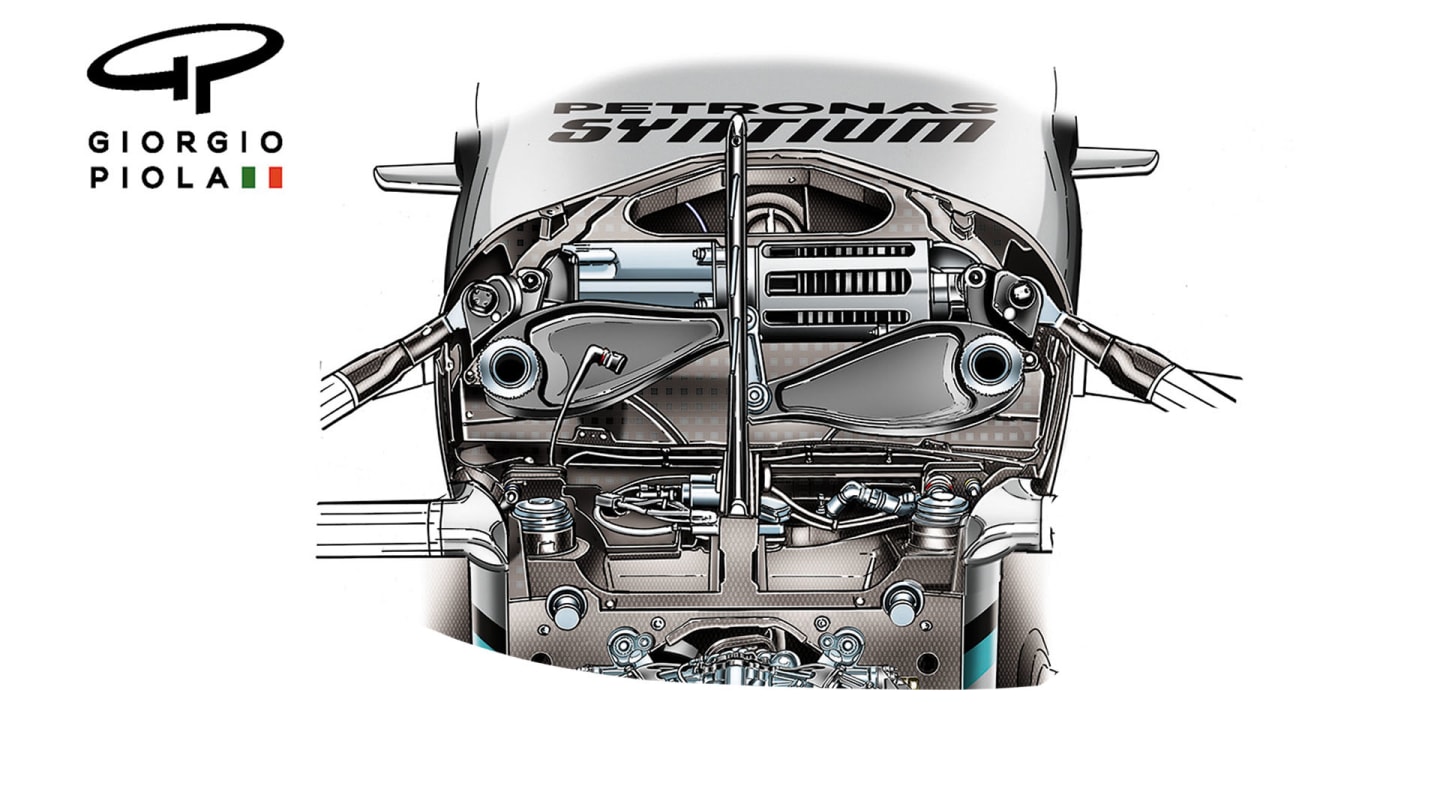
The suspension system on Mercedes' W10 featuring the double-almond anti-roll bar arrangement
It may be that this will still be permissible, depending upon whether there is any asymmetry in the way the roll bar articulates and whether that varies according to how sudden the cornering loads are. It may have been possible previously to engineer this system so that a sudden steering input would sit the car down on the outside-rear and with appropriate valving in the damper allow the inside front to lighten or lift, and thus help it glide over the kerbs without upsetting the car.
If that is how the Mercedes system was operating, it would also now be headed off by the following wording of the regulations.
“Hysteresis is acceptable in an element providing it is at an incidental level and no attempt is made to utilise any inherent hysteresis to alter the response of the element relative to its primary purpose. Links may be used to actuate the suspension elements that are mounted remotely from the rockers but cannot be used to circumvent or subvert the requirement of Article 10.2.6. Such links must be rigid and of minimal mass and design so as to achieve the linking mechanism.”
TECH TUESDAY: How the rear wing of the 2022 car has been designed to be an F1 gamechanger
Article 10.2.6 states: “On each axle, the state of its suspension system must be uniquely defined by the rotation, and angular velocity of its two rockers. Inertial and hysteresis effects are acceptable provided they are incidental.”
In terms of the outboard components of the suspension, the practice of mounting the upper wishbone to hub extensions rising out of the wheel hub (as pioneered by Mercedes and Toro Rosso a few years ago and since standardised) in order to reduce airflow blockage is no longer permitted. The wishbone must now attach to the hub within the diameter of the wheel.
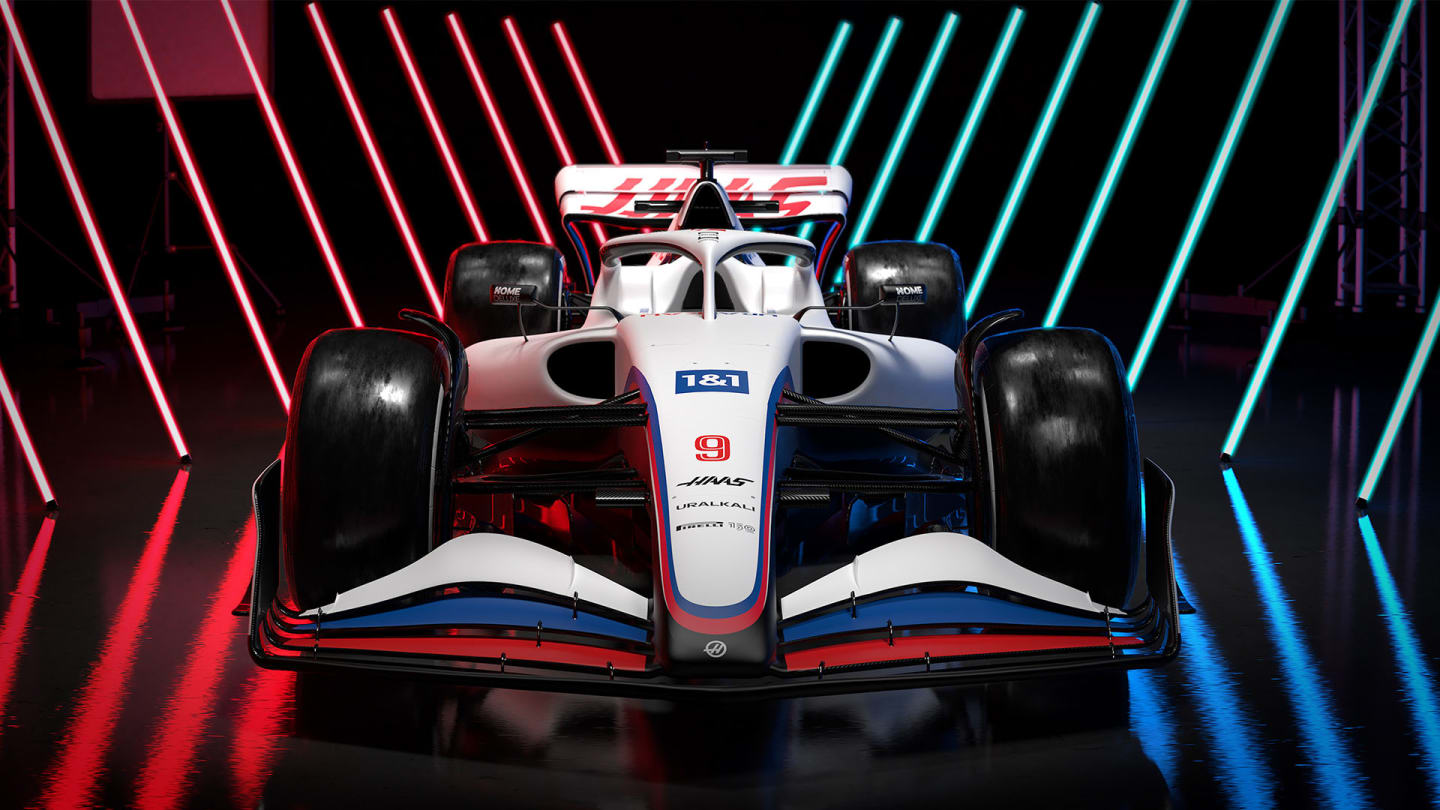
Haas' VF-22 was the first sign of what's to come in 2022
Another casualty of the new regs: the very narrow angle of the top wishbone (also a Mercedes innovation) which allowed that to become almost a single conjoined piece, and thereby made it possible to channel the airflow much more effectively. Now the two parts of the wishbone must meet a minimum angle, which is all part of reducing the turbulence of the car’s wake.
TECH TUESDAY: How the front wing on the all-new 2022 cars has been designed to improve overtaking
The area of airflow aft of the front wing as it makes its way to the floor and the radiator inlets is crucially important and highly lap time-sensitive. With the new wing/nose configuration and the banning of bargeboards, teams are going to be trying hard to find new ways of getting the most efficient flow there.
The pushrod suspension layout (with the inboard rockers mounted at the top of the nose) had become standard in recent years. This allows the airflow to sweep beneath the main blockage formed by the pushrod.
But we are expecting to see the reintroduction of the pullrod layout this year by some teams. Having the rockers on the bottom creates a layout which clears a bigger area (and lowers the centre of gravity) but offers less opportunity for directing the flow where it's needed.
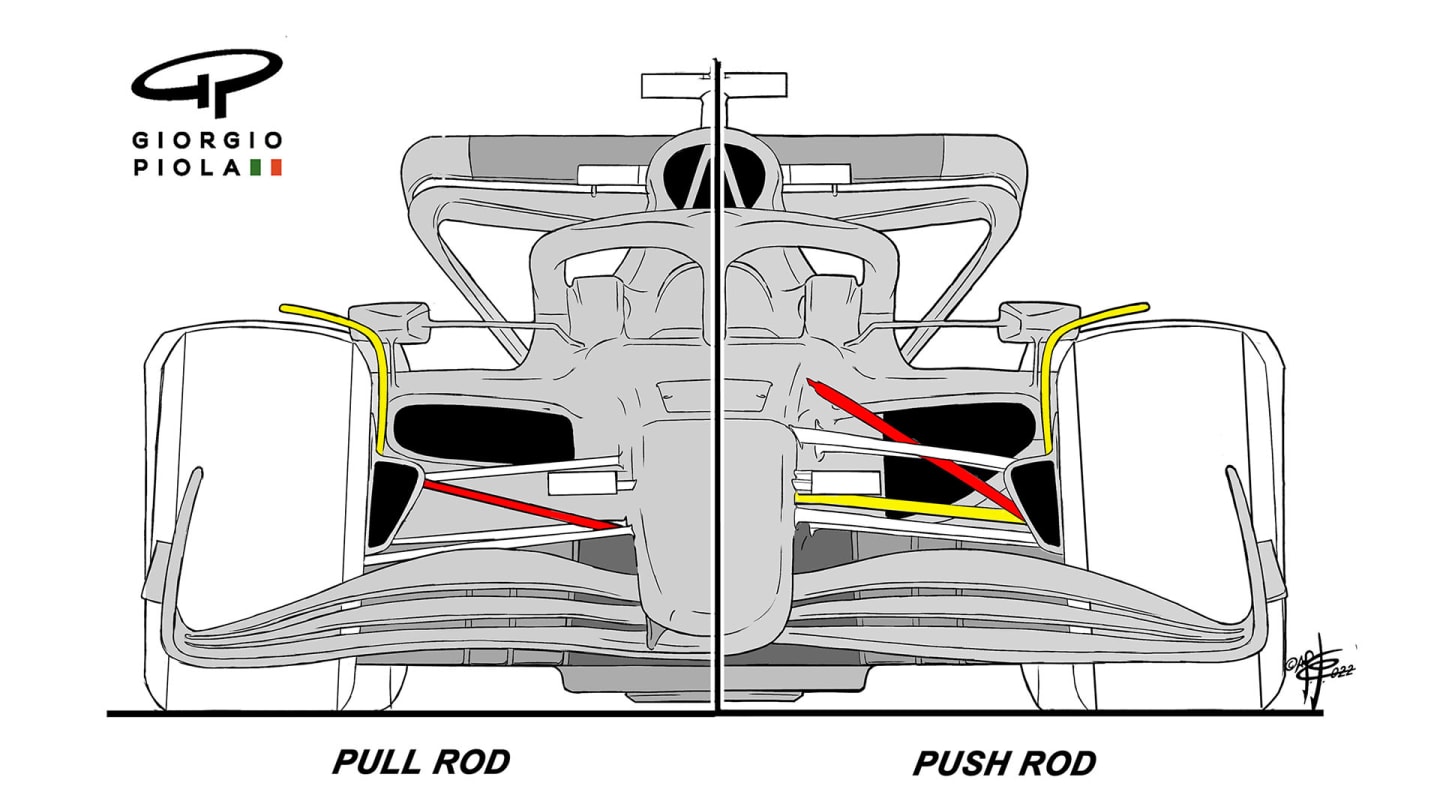
The different airflows that will result from the pull-rod and push-rod front suspensions can be seen here
Suspension is going to be a critical differentiator in performance and the new aero-led restrictions upon the systems could play a part in shuffling the pack.
Everything you need for the 2022 Formula 1 season
- DIARY DATES: The 2022 F1 calendar and F1 car launch schedule
- WATCH: Everything you need to know about the new 2022 F1 car
- 2022 F1 GRID – All the drivers and teams racing this season
- 10 things every Formula 1 fan should be excited for in 2022
- 5 bold predictions for the 2022 season – but how many will come true?
YOU MIGHT ALSO LIKE
News Piastri ‘proud’ to bounce back with victory in Spain as he hails ‘weekend I’ve been looking for’

Video RACE START: Watch the getaway in Spain as Piastri keeps the lead while Norris loses out to Verstappen
News ‘I lost out to the better guy’ – Norris ‘confident’ he can improve after being beaten by Piastri in Barcelona
FeatureF1 Unlocked STRATEGY GUIDE: What are the tactical options for the Spanish Grand Prix?



